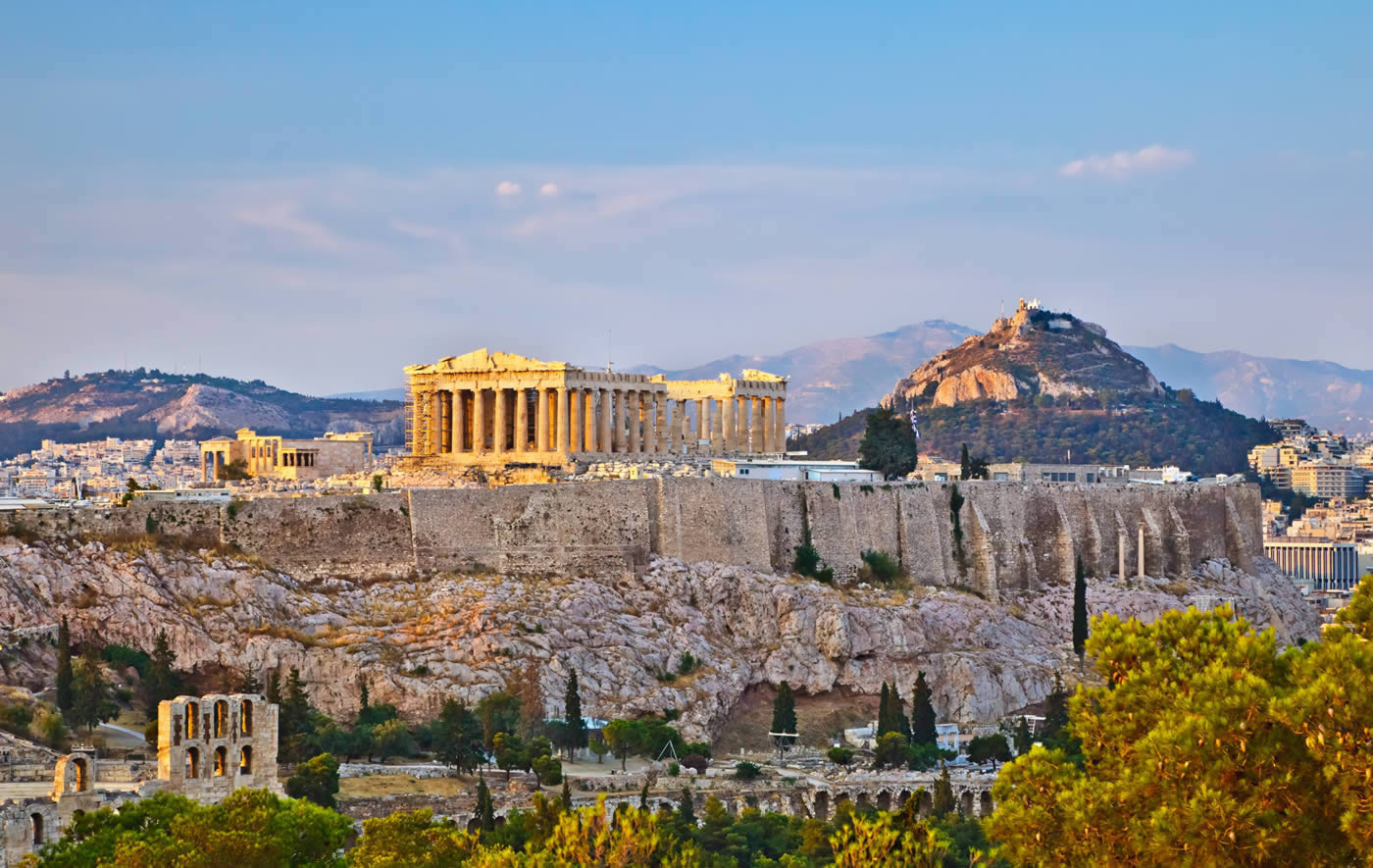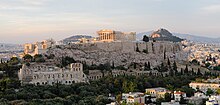What You Need To Know
Athens is the capital and largest city of Greece. Athens dominates the Attica region and is one of the world’s oldest cities, with its recorded history spanning around 3,400 years, and its earliest human presence starting somewhere between the 11th and 7th millennia BC. Classical Athens was a powerful city-state that emerged in conjunction with the seagoing development of the port of Piraeus. A centre for the arts, learning and philosophy, home of Plato’s Academy and Aristotle’s Lyceum, it is widely referred to as the cradle of Western civilization and the birthplace of democracy, largely because of its cultural and political impact on the European continent, and in particular the Romans. In modern times, Athens is a large cosmopolitan metropolis and central to economic, financial, industrial, maritime, political and cultural life in Greece. In 2015, Athens was ranked the world’s 29th richest city by purchasing power and the 67th most expensive in a UBS study. Athens is recognized as a global city because of its geo-strategic location and its importance in shipping, finance, commerce, media, entertainment, arts, international trade, culture, education and tourism. It is one of the biggest economic centres in southeastern Europe, with a large financial sector, and its port Piraeus is the largest passenger port in Europe, and the second largest in the world. The municipality (City) of Athens had a population of 664,046 (in 2011, 796,442 in 2004) within its administrative limits, and a land area of 39 km2 (15 sq mi). The urban area of Athens (Greater Athens and Greater Piraeus) extends beyond its administrative municipal city limits, with a population of 3,090,508 (in 2011) over an area of 412 km2 (159 sq mi). According to Eurostat in 2004, the Athens Larger Urban Zone (LUZ) was the 7th most populous LUZ in the European Union (the 5th most populous capital city of the EU), with a population of 4,013,368. Athens is also the southernmost capital on the European mainland. The heritage of the classical era is still evident in the city, represented by ancient monuments and works of art, the most famous of all being the Parthenon, considered a key landmark of early Western civilization. The city also retains Roman and Byzantine monuments, as well as a smaller number of Ottoman monuments. Athens is home to two UNESCO World Heritage Sites, the Acropolis of Athens and the medieval Daphni Monastery. Landmarks of the modern era, dating back to the establishment of Athens as the capital of the independent Greek state in 1834, include theHellenic Parliament (19th century) and the Athens Trilogy, consisting of the National Library of Greece, the Athens Universityand the Academy of Athens. Athens was the host city of the first modern-day Olympic Games in 1896, and 108 years later it welcomed home the 2004 Summer Olympics. Athens is home to the National Archeological Museum, featuring the world’s largest collection of ancient Greek antiquities, as well as the new Acropolis Museum.
Area: 2,929 km²
Population: 10,910,128 Visit Countrymeters
Currency
By the late 1970’s, the pollution of Athens had become so destructive that according to the then Greek Minister of Culture, Constantine Trypanis, “…the carved details on the five the caryatids of the Erechtheum had seriously degenerated, while the face of the horseman on the Parthenon’s west side was all but obliterated.” A series of measures taken by the authorities of the city throughout the 1990’s resulted in the improvement of air quality; the appearance of smog (or nefos as the Athenians used to call it) has become less common. Measures taken by the Greek authorities throughout the 1990’s have improved the quality of air over the Attica Basin. Nevertheless, air pollution still remains an issue for Athens, particularly during the hottest summer days. In late June 2007, the Attica region experienced a number of brush fires, including a blaze that burned a significant portion of a large forested national park in Mount Parnitha, considered critical to maintaining a better air quality in Athens all year round. Damage to the park has led to worries over a stalling in the improvement of air quality in the city. The major waste management efforts undertaken in the last decade (particularly the plant built on the small island of Psytalia) have improved water quality in the Saronic Gulf, and the coastal waters of Athens are now accessible again to swimmers. In January 2007, Athens faced a waste management problem when its landfill near Ano Liosia, an Athenian suburb, reached capacity. The crisis eased by mid-January when authorities began taking the garbage to a temporary landfill.
History



Language
The official language of Greece is Greek, spoken by 99% of the population. In addition, a number of non-official, minority languages and some Greek dialects are spoken as well. The most common foreign languages learned by Greeks are English, German, French and Italian.
Music
The most successful songs during the period 1870–1930 were the so-called Athenian serenades , based on the Heptanesean kantádhes and the songs performed on stage in revues, musical comedies, operettas and nocturnes that were dominating Athens’ theatre scene. Notable composers of operettas or nocturnes were Kostas Giannidis, Dionysios Lavrangas, Nikos Hatziapostolou, while Theophrastos Sakellaridis‘ The Godson remains probably the most popular operetta. Despite the fact that the Athenian songs were not autonomous artistic creations (in contrast with the serenades) and despite their original connection with mainly dramatic forms of Art, they eventually became hits as independent songs. Notable actors of Greek operettas, who made also a series of melodies and songs popular at that time, include Orestis Makris, Kalouta sisters, Vasilis Avlonitis, Afroditi Laoutari, Eleni Papadaki, Marika Nezer, Marika Krevata and others. After 1930, wavering among American and European musical influences as well as the Greek musical tradition. Greek composers begin to write music using the tunes of the tango, waltz, swing, foxtrot, some times combined with melodies in the style of Athenian serenades’ repertory. Nikos Gounaris was probably the most renowned composer and singer of the time. In 1923, after the population exchange between Greece and Turkey, many ethnic Greeks from Asia Minor fled to Athens as a result of the Greco-Turkish War. They settled in poor neighborhoods and brought with them Rebetiko music, making it popular also in Greece, which became later the base for the Laïko music. Other forms of song popular today in Greece are elafrolaika, entechno, dimotika, and skyladika. Greece’s most notable, and internationally famous, composers of Greek song, mainly of the entechno form, are Manos Hadjidakis and Mikis Theodorakis. Both composers have achieved fame abroad for their composition of film scores.
Tourism
Athens has been a destination for travelers since antiquity. Over the past decade, the city’s infrastructure and social amenities have improved, in part because of its successful bid to stage the 2004 Olympic Games. The Greek Government, aided by the EU, has funded major infrastructure projects such as the state-of-the-art Eleftherios Venizelos International Airport, the expansion of the Athens Metro system, and the new Attiki Odos Motorway. Athens was voted as the third best European city to visit in 2015 by European Best Destination. More than 240,000 people voted.
Transport
Bus transport
Ethel, or Thermal Bus Company, is the main operator of buses in Athens. Its network consists of about 300 bus lines which span the Athens Metropolitan Area, with an operating staff of 5,327, and a fleet of 1,839 buses. Of those 1,839 buses 416 run on compressed natural gas, making up the largest fleet of natural gas-powered buses in Europe.
Athens Metro Train
The Athens Metro is more commonly known in Greece as the Attiko Metro and provides public transport throughout the Athens Urban Area. While its main purpose is transport, it also houses Greek artifacts found during construction of the system. The Athens Metro has an operating staff of 387 and runs two of the three metro lines; namely the Red (line 2) and Blue (line 3) lines, which were constructed largely during the 1990’s, with the initial sections opened in January 2000. All routes run entirely underground and a fleet of 42 trains consisting of 252 cars operate within the network, with a daily occupancy of 550,000 passengers.
Electric railway

Not run by the Athens Metro company, is the ISAP (Greek: ΗΣΑΠ), the Electric Railway Company line, which for many years served as Athens’s primary urban rail transport. This is today the Green Line (line 1) of the Athens Metro network as shown on maps, and unlike the red and blue lines, ISAP has many above-ground sections on its route. This was the original metro line from Piraeus to Kifisia; serving 22 stations, with a network length of 25.6 km (15.9 mi), an operating staff of 730 and a fleet of 44 trains and 243 cars. ISAP’s occupancy rate is 600,000 passengers daily.
Commuter/suburban rail Proastiakos
The Athens commuter rail service, referred to as the “Proastiakós”, connects Eleftherios Venizelos International Airport to the city of Corinth, 80 km (50 mi) west of Athens, via Larissa station, the city’s central rail station and the port of Piraeus. The service is sometimes considered the fourth line of the Athens Metro. The length of Athens’s commuter rail network extends to 120 km (75 mi), and is expected to stretch to 281 km (175 mi) by 2010. The Proastiakos will be extended to Xylokastro west of Athens and Chalkida.
Tram
Athens Tram SA operates a fleet of 35 vehicles, called ‘Sirios’, which serve 48 stations, employ 345 people with an average daily occupancy of 65,000 passengers. The tram network spans a total length of 27 km (17 mi) and covers ten Athenian suburbs. The network runs from Syntagma Square to the southwestern suburb of Palaio Faliro, where the line splits in two branches; the first runs along the Athens coastline toward the southern suburb of Voula, while the other heads toward the Piraeus district of Neo Faliro. The network covers the majority of the Saronic coastline. Further extensions are planned towards the major commercial port of Piraeus. The expansion to Piraeus will include 12 new stations, increase the overall length of tram route by 5.4 km (3 mi), and increase the overall transportation network.
Motorways
Two main motorways of Greece begin in Athens, namely the A1/E75, which crosses through Athens’s Urban Area from Piraeus, heading north towards Greece’s second largest city, Thessaloniki; and the A8/E94 heading west, towards Patras, which incorporated the GR-8A. Before their completion much of the road traffic used the GR-1 and the GR-8. Athens’ Metropolitan Area is served by the motorway network of the Attiki Odos toll-motorway (code: A6). Its main section extends from the western industrial suburb of Elefsina to Athens International Airport; while two beltways, namely the Aigaleo Beltway (A65) and the Hymettus Beltway (A64) serve parts of western and eastern Athens respectively. The span of the Attiki Odos in all its length is 65 km (40 mi), making it the largest metropolitan motorway network in all of Greece.
Weather
Athens has a warm temperate Mediterranean climate (Köppen Csa). The dominant feature of Athens’s climate is alternation between prolonged hot and dry summers and mild winters with moderate rainfall. With an average of 414.1 millimetres (16.30 in) of yearly precipitation, rainfall occurs largely between the months of October and April. July and August are the driest months, where thunderstorms occur sparsely once or twice a month. Winters are mild and rainy, with a January average of 8.9 °C (48.0 °F); in Nea Filadelfeia and 10.3 °C (50.5 °F) in Hellinikon; Snowstorms are infrequent but can cause disruption when they occur. Snowfalls are more frequent in the northern suburbs of the city. The annual precipitation of Athens is typically lower than in other parts of Greece, mainly in western Greece. As an example, Ioannina receives around 1,300 mm (51 in) per year, and Agrinio around 800 mm (31 in) per year. Daily average highs for July (1955–2004) have been measured at 33.7 °C (92.7 °F) at Nea Filadelfeia weather station, but other parts of the city may be even warmer, in particular its western areas, partly because of industrialization and partly because of a number of natural factors, knowledge of which has been available from the mid-19th century. Temperatures often surpass 38 °C (100 °F) during the city’s notorious heatwaves. Athens is affected by the urban heat island effect in some areas which is caused by human activity, altering its temperatures compared to the surrounding rural areas, and bearing detrimental effects on energy usage, expenditure for cooling, and health. The urban heat island of the city has also been found to be partially responsible for alterations of the climatological temperature time-series of specific Athens meteorological stations, because of its impact on the temperatures and the temperature trends recorded by some meteorological stations. On the other hand, specific meteorological stations, such as the National Garden station and Thiseio meteorological station, are less affected or do not experience the urban heat island. Athens holds the World Meteorological Organization record for the highest temperature ever recorded in Europe, at 48.0 °C (118.4 °F), which was recorded in the Elefsina and Tatoi suburbs of Athens on 10 July 1977.















